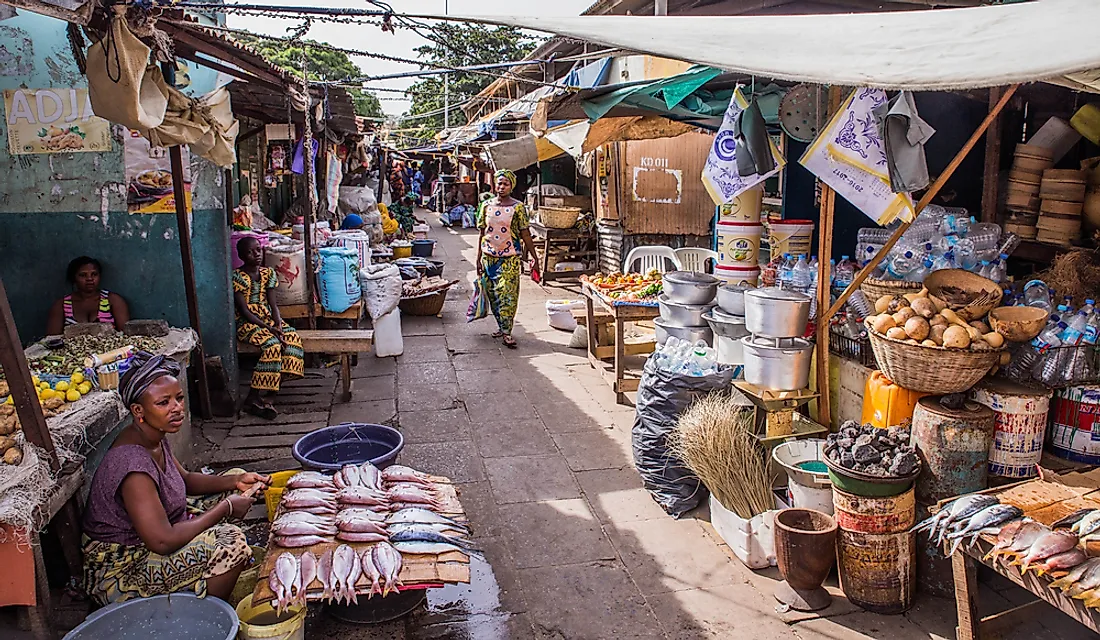What Is The Ethnic Composition Of The Gambia?

The Gambia is the smallest mainland African state that is situated in West Africa. The Gambia is almost entirely bordered by Senegal except for the western shorelines along the Atlantic Ocean. The Gambia is located on both sides of the lower reaches of River Gambia, which stretches through the center of the country before emptying into the Atlantic Ocean. The Gambia occupies an area of about 4,127 square miles and had a population of over 1,857,181 by April 2013. The capital city of The Gambia is Banjul while the largest cities in the country are Brikama and Serekunda.
Some of the largest ethnic groups in the Gambia include Mandinka, Wolof, Fula, Serers, Serahule, Jola, and Manjago, among others. The Akus, also known as Krio, is one of the smallest Gambian ethnic group. There are about 3,500 non-Africans living in the country, including families of Lebanese origin (0.23%) and Europeans. A considerable percentage of the Europeans living in the country is the British who were left behind after The Gambia gained its independence. Some of the main ethnic groups in The Gambia include:
Mandinka People
The Mandinka community, also known as Malinke or Mandinko, is a West African ethnic group with an estimated population of about 32 million. The Mandinkas belong to the more prominent linguistic family of the Mande Community, which accounts for over 87 million people on the planet. The Mandinkos are the descendants of the Mali Empire which ruled over a large part of West Africa after rising into power in the thirteenth century. The Mandinkos live primarily in the western parts of Africa, particularly in Ivory Coast, Mauritania, Niger, Guinea-Bissau, Senegal, Sierra Leone, The Gambia, Mali, and Guinea. Even though they are found in various states in West Africa, the Mandinko people are not the biggest ethnic group in most of these countries. The Mandinkas are the largest ethnic group in Guinea, Mali, and The Gambia.
Fula People
Fula, also known as Fulbe or Fulani, is one of the biggest ethnic groups in the West and Sahel African that is widely spread throughout the region. There are over 38 million Fula people on Earth. The Fula people can be found in northern parts of Central Africa, West Africa, Sudan, and South Sudan.
Wolof People
The Wolof community is a West African ethnic group found in Mauritania, Senegal, and The Gambia. The Wolofs are the biggest group in Senegal while in other countries, they are the minorities. There are about 356,000 Wolofs living in the Gambia. The Wolof people speak the Wolof language.
Jola Community
The Jola community is a West African ethnic group found in The Gambia, Senegal, and Guinea-Bissau. The term "Jola" is a Mandinka name for them which means "payback" since they are known for paying back what is done to them. The Jolas are referred to as the Ajamataw or Ajamat people in their language. A huge percentage of the Jola people reside on the Atlantic coast between the southern shores of River Gambia, northern parts of Guinea-Bissau, and Casamance area in Senegal. The Jolas live in their kingdom with the elders, Marabout (teacher and Muslim religious leader), and their king in Guinea-Bissau, Senegal, and The Gambia. Despite being influenced by Christianity and Islam, the Jolas still follow their traditional rituals and religion.
Krio People
The Krio people, also known as Creole or Aku, are a minority Gambian ethnic-group. The Aku people are the descendant of the Creole community from Sierra Leone. The Krio people account for over 2% of the country's population. The Gambian Aku community is an extension of the Creoles from the Freetown community, and they have roots in England, North America, West Indies, and numerous African communities. The Aku people also have some European heritages through their links to Freetown Creoles and intermarriage. A percentage of the Krio people speak Aku (an English-based language that resembles the Krio language from Sierra Leone).











